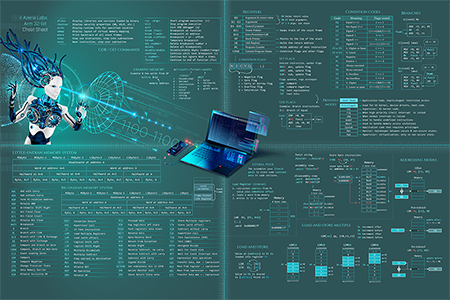We already briefly touched the conditions’ topic while discussing the CPSR register. We use conditions for controlling the program’s flow during it’s runtime usually by making jumps (branches) or executing some instruction only when a condition is met. The condition is described as the state of a specific bit in the CPSR register. Those bits change from time to time based on the outcome of some instructions. For example, when we compare two numbers and they turn out to be equal, we trigger the Zero bit (Z = 1), because under the hood the following happens: a – b = 0. In this case we have EQual condition. If the first number was bigger, we would have a Greater Than condition and in the opposite case – Lower Than. There are more conditions, like Lower or Equal (LE), Greater or Equal (GE) and so on.
The following table lists the available condition codes, their meanings, and the status of the flags that are tested.

We can use the following piece of code to look into a practical use case of conditions where we perform conditional addition.
.global main
main:
mov r0, #2 /* setting up initial variable */
cmp r0, #3 /* comparing r0 to number 3. Negative bit get's set to 1 */
addlt r0, r0, #1 /* increasing r0 IF it was determined that it is smaller (lower than) number 3 */
cmp r0, #3 /* comparing r0 to number 3 again. Zero bit gets set to 1. Negative bit is set to 0 */
addlt r0, r0, #1 /* increasing r0 IF it was determined that it is smaller (lower than) number 3 */
bx lr
The first CMP instruction in the code above triggers Negative bit to be set (2 – 3 = -1) indicating that the value in r0 is Lower Than number 3. Subsequently, the ADDLT instruction is executed because LT condition is full filled when V != N (values of overflow and negative bits in the CPSR are different). Before we execute second CMP, our r0 = 3. That’s why second CMP clears out Negative bit (because 3 – 3 = 0, no need to set the negative flag) and sets the Zero flag (Z = 1). Now we have V = 0 and N = 0 which results in LT condition to fail. As a result, the second ADDLT is not executed and r0 remains unmodified. The program exits with the result 3.





